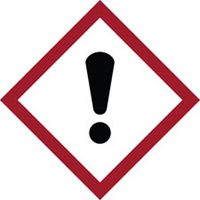| The Home page of ILPI's Safety Data Sheet (SDS) Resource, the leader in SDS information since 1995! | |
| The history and philosophy behind this resource. | |
| A curated collection of books and reference materials concerning Safety Data Sheets and closely related topics. | |
| Paste your plain text SDS into the SDS-Demystifier, and it will be converted into a hypertext-enriched document with links to detailed explanations of each key term. | |
| An extensive list of frequently asked questions about Safety Data Sheets including regulations, content, compliance, and more. | |
| A humorous take on Safety Data Sheet jargon. Fill in the blanks on our entry form to generate a personalized Unsafety Data Sheet to share with your coworkers. | |
| Since 1995, we've maintained this massive curated list of the best places to find Safety Data Sheets on the Internet. | |
| You are here! Way more than a glossary, this hypertext-enhanced resource covers hundreds of SDS-related terms and expert knowledge. Each entry includes both the SDS relevance and links to additional authoritative resources. | |
| Archived results of Safety Data Sheet related polls taken by some of our millions of site visitors | |
| The OSHA regulations behind SDS regulations, including the inspection guidelines and over 400 official interpretations letters under the Hazard Communication Standard | |
| Commercial suppliers of SDS authoring and management software as well as cloud compliance services. | |
| Commercial companies that will create SDS's for your specific needs as well as SDS translation companies. |

Safety signs, banners, and scoreboards? Get yours at Safety Emporium!
Definition

Laboratory operations are a breeze with Ohaus analytical balances from Safety Emporium.
An irritant a chemical, which is not corrosive, but which causes a reversible inflammatory effect on living tissue by chemical action at the site of contact. This effect is called irritation.
More generally, an irritant is a substance which on immediate, prolonged, or repeated contact with normal living tissue will induce a local inflammatory reaction.
Appendix A of the 2012 version of 29 CFR 1910.1200, the OSHA Hazard Communication Standard (HCS 2012), specifies three specific types of irritation based on the site and type of reversible damage:
- Skin irritation is the production of reversible damage to the skin following the application of a test substance for up to 4 hours.
- Eye irritation is the production of changes in the eye following the application of test substance to the anterior (front) surface of the eye, which are fully reversible within 21 days of application.
- Respiratory tract irritation has a detailed description involving both symptoms and subjective human observations. For details see Section A.8.2.2.1 of Appendix A.
Additional Info

Get your GHS-compliant labels and signs from Safety Emporium.
With the adoption of HCS 2012, OSHA enacted the US version of the Globally Harmonized System of Classification and Labeling of Chemicals (GHS). The GHS uses a series of Hazard Statements (H-Statements) as well as Precautionary Statements (P-Statements) to provide standardized warnings for working with chemicals, including those classified as irritants. In addition, labels (and, optionally, Safety Data Sheets) will use pictograms, visual graphic elements designed to catch the user's attention. With respect to irritants, the exclamation mark pictogram (shown on the right here) will appear on the label when the material is a Category 2 eye or skin irritant.
Under the now-obsolete 1994 version of the HazCom Standard (HCS 1994), an irritant was defined more succinctly as:
a chemical, which is not corrosive, but which causes a reversible inflammatory effect on living tissue by chemical action at the site of contact. A chemical is a skin irritant if, when tested on the intact skin of albino rabbits by the methods of 16 CFR 1500.41 for four hours exposure or by other appropriate techniques, it results in an empirical score of five or more. A chemical is an eye irritant if so determined under the procedure listed in 16 CFR 1500.42 or other appropriate techniques."
16 CFR 1500.3 defines a primary irritant as a substance that is not corrosive and that human experience data indicate is a primary irritant and/or means a substance that results in an empirical score of five or more when tested by the method described in Sec. 1500.41.
The effect of irritants is temporary. For example, pepper spray is a severe eye irritant, but causes no lasting effects. Chronic irritation should be discussed with your physician as it can be symptom of a variety of other underlying disease conditions or allergies.
SDS Relevance
It is sometimes difficult to tell whether an itch, redness or other irritation is the result of a chemical exposure. Be sure to wear personal protective equipment (PPE) (such as gloves, goggles, aprons or dust masks) that is effective for the kind of irritant you are working with. You can find recommendations for preventative measures in Section 8 (exposure controls/personal protection) of the Safety Data Sheet for the material.

Safety Emporium carries all kinds of eye/face washes, safety showers, drench hoses and more.
Symtoms of exposure to a substance will be listed in Section 11 (toxicological information) of the SDS. If you are exposed to the material and are suffering irritation or other symptoms, consult Section 4 (first-aid measures) for recommended treatment.
First aid treatment for skin irritation usually involves flushing the affected area with water. Consult a physician if the symptoms persist or you have concerns about possible transdermal (through the skin) toxicity.
The most effective first aid treatment for eye irritation caused by chemicals or foreign bodies in the eye is to flush the eyes with an ANSI-approved eye wash. Follow up with a physician, especially if a foreign body was involved (corneal abrasions or scratches are possible) or the chemical was basic (bases can cause severe eye damage even with water flushing).
Respiratory tract irritation can be complex. If you inhale chemical fumes, dusts, mists, or vapors and your throat and lungs are irritated, seek professional medical advice.
Further Reading
- Health Effects Test Guidelines OPPTS 870.2400 Acute Eye Irritation from the US Environmental Protection Agency.
- Health Effects Test Guidelines OPPTS 870.2500 Acute Dermal Irritation from the US Environmental Protection Agency.
- Health Effects Test Guidelines OPPTS 870.1300 Acute Inhalation Toxicity from the US Environmental Protection Agency.
- Irritant Contact Dermatitis at eMedicine discusses many common skin irritants.
- About Work-related Asthma at the US CDC.
- Allergies on the Job: 7 Workplace Irritants at ABC News.
- Irritant Gas Inhalation Injury at the Merck Manual professional version.
See also: dermatitis, inflammation, sensitizer, urticaria, vesicant.